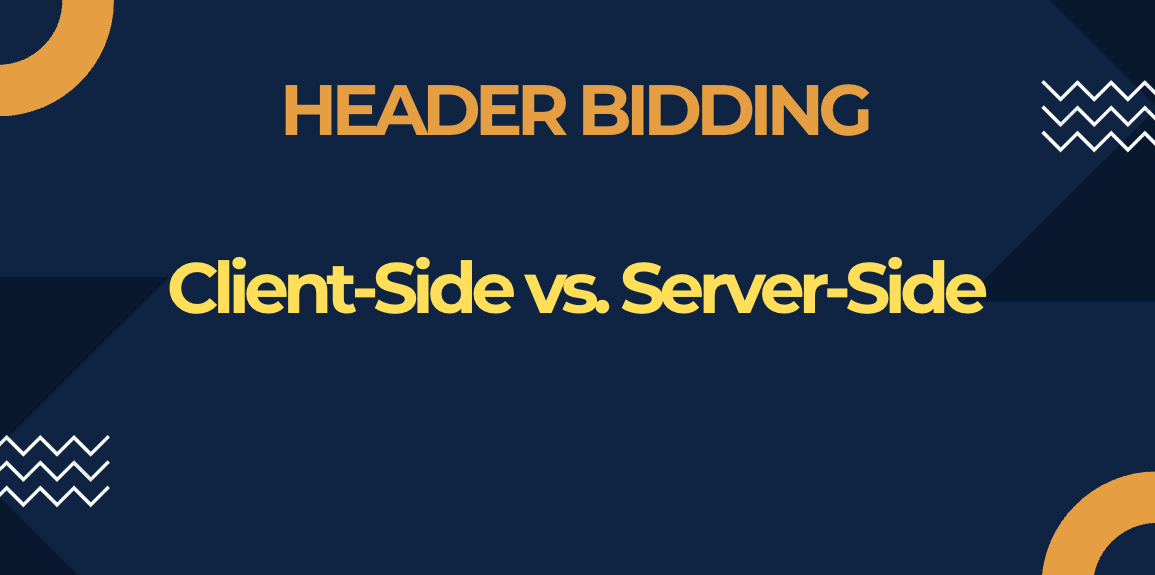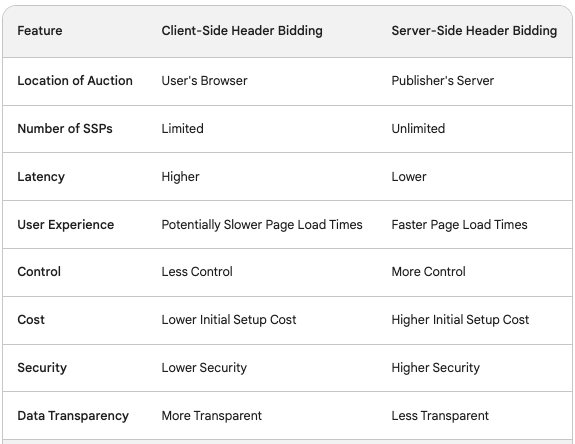Client-Side vs. Server-Side Header Bidding: What's The Difference?

In the ever-evolving world of programmatic advertising, maximizing yield and improving user experience are constant battles for publishers. ⚔️ Enter header bidding, a technique that allows publishers to connect with multiple ad exchanges simultaneously, ensuring the highest possible price for their ad inventory.
But with two major flavors — client-side and server-side — choosing the right one for your needs can be a daunting task.
Let's dive deep into the differences between client-side and server-side header bidding, so you can make an informed decision about your advertising strategy.
What is Header Bidding?
Header bidding is a programmatic advertising technique where multiple ad exchanges compete for an ad impression in real-time before the user's browser even makes a request for an ad. ⚡️ This creates a more competitive environment, ultimately driving higher CPMs for publishers.
Client-Side vs. Server-Side Header Bidding: A Breakdown
Here's a simplified breakdown of the key differences between client-side and server-side header bidding:

Client-Side Header Bidding: Pros and Cons ⚖️
Pros:
- Simpler setup and implementation ️
- Lower initial cost
- More control over the auction process ️
- Higher cookie match rates
Cons:
- Slower page load times
- Limited number of SSPs
- Decreased user experience
- Increased latency ⏳
Server-Side Header Bidding: Pros and Cons ⚖️
Pros:
- Faster page load times ⚡️
- Unlimited number of SSPs ♾️
- Improved user experience
- Reduced latency ⏱️
- Increased security ️
- Better data insights
Cons:
- More complex setup and implementation ️
- Higher initial cost
- Less control over the auction process
- Less transparent data
Choosing the Right Header Bidding Solution
The best header bidding solution for you will depend on your specific needs and priorities.
Consider the following factors when making your decision:
- Your budget
- Your technical expertise
- Your desired level of control ️
- Your user experience goals
- Your data needs
